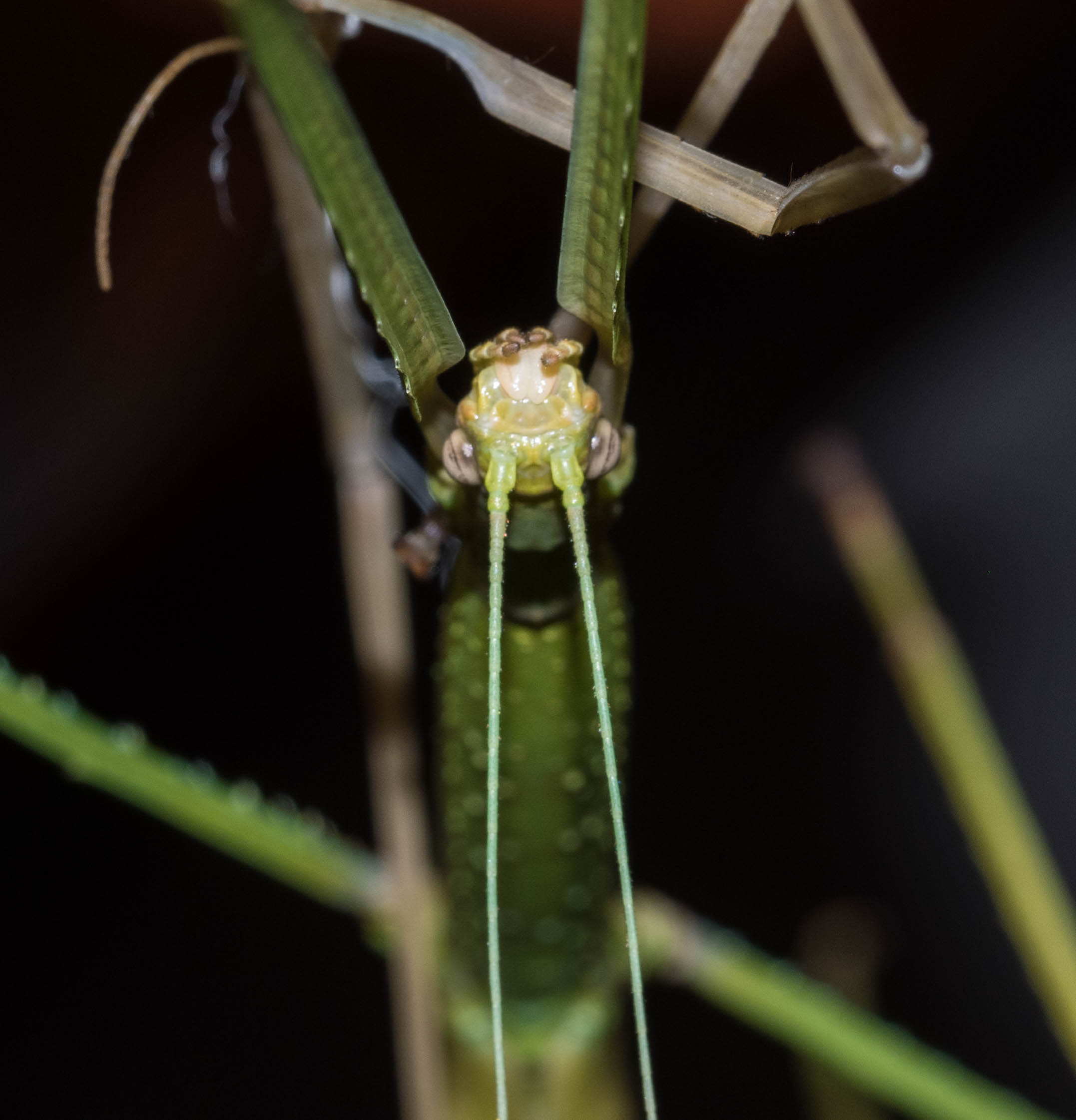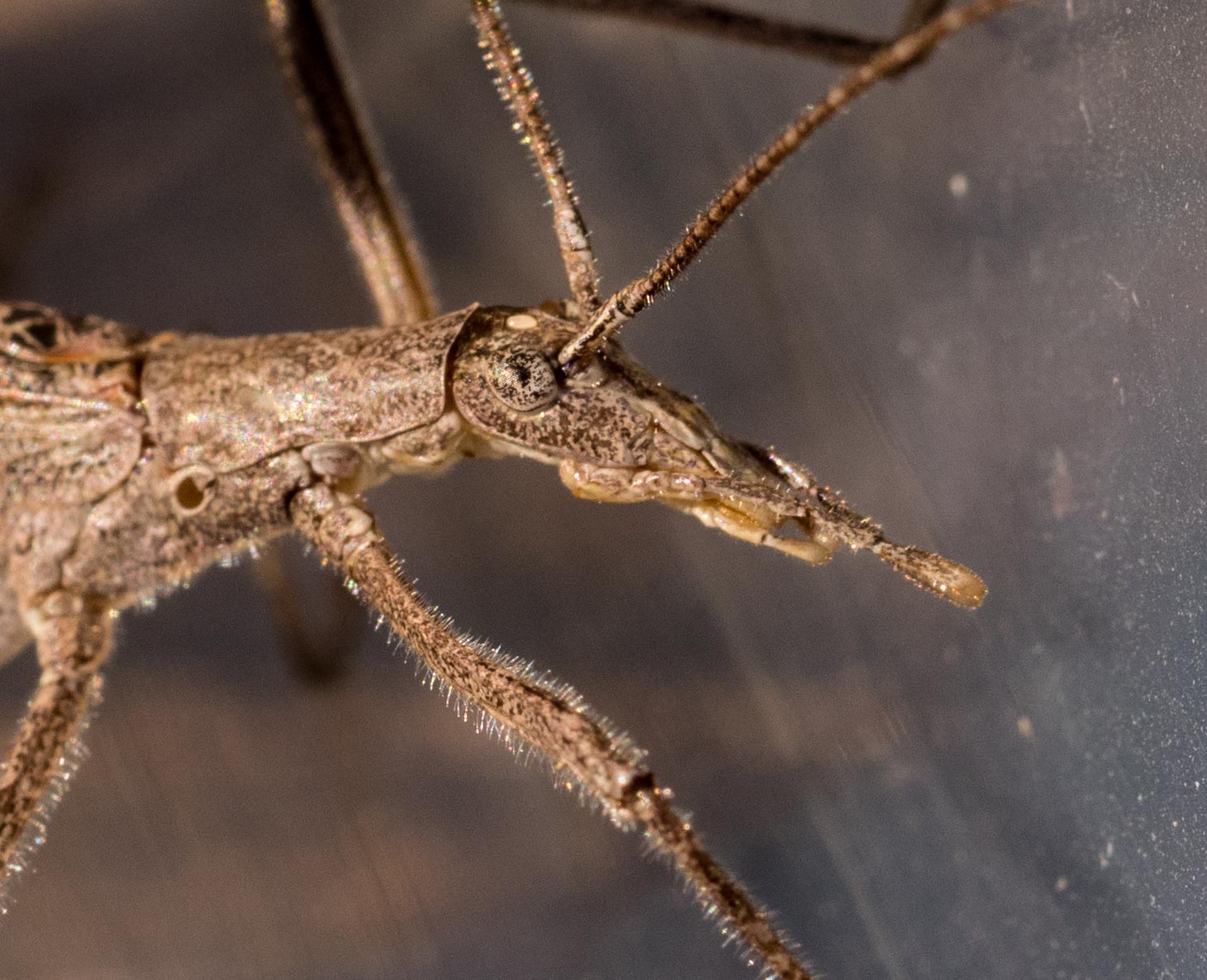The tyranny of the exoskeleton

Arthropods are, by virtually any measure, the most successful animal group on earth - in large part due to their tough protective exoskeleton. But this armour coating has a downside. Its relative inflexibility means that it must be set aside, albeit briefly, to allow the animal to continue growing. Last night we had the good fortune to witness this dramatic process - called ecdysis - at first hand.
For some weeks we have been keeping a nymphal stick insect - which we've nicknamed "Twiggy" - in our terrarium. Phasmids make great pets. They are large and look really interesting. OK, apart from a rather neat swaying of the body they have a limited behavioural repertoire. But they are very quiet and easy and inexpensive to look after. A small branch of eucalypt foliage placed in the tank every few days is all that is needed to keep your pet phasmid happy and contented. During the day Twiggy shows few signs of activity. However come nightfall it slowly but systematically chews through a gum leaf or two.
The serious scientific purpose of keeping this phasmid nymph was to identify it to the species level. There are over 100 species of phasmids in Australia. Based on our location we had narrowed Twiggy down to two candidates - Podocanthus typhon and Ctenomorpha marginipennis. However these two species have very similar nymphs. We have been keen to rear our pet through to the adult stage to allow a positive identification. We never expected that we would be lucky enough to witness its transition from the nymph to the adult.
However, quite by chance, at 8:45pm last night, Kerri noticed Twiggy hanging upside down in a strange fashion - ecdysis had begun! I hurriedly fitted the macro lens to my camera and began shooting images.
In this first photo, taken at 8:46pm, Twiggy had already withdrawn much of its bright shiny new green body from its old, brown former self. However its new legs were still trapped inside.
By 8:51pm it had pulled its middle legs free and the hind legs were on their way out.
By 8:53pm the hind legs were also free and just a small portion of the abdomen remained behind in the nymphal skin.
Just one and a half minutes later, all of the legs had been pulled free. This view from the dorsal side shows the wings, which at this stage look like crumpled leaves.
Twiggy lay dangling from its old skin by just the tip of the abdomen. It lay motionless in this zen-like head-down position for some 15 minutes. The wings started to inflate but otherwise no change was evident.
Then at 9:13pm Twiggy suddenly (well, as suddenly as a stick insect does anything) lifted its forelegs upwards, grasped the shell of its former legs and started to pull itself upright.
In so doing, it pulled its abdomen free from the nymphal exoskeleton.
It lay motionless in this vertical, heads-up position for over two hours.
There was no apparent change during this time except that the wings continued to inflate.
wings at 9:19pm
wings at 9:53pm.
inner side of wings at 9:53pm - fully inflated but folded.
The final product! We are now confident of Twiggy's identity - a female Ctenomorpha marginipennis. So we chose an appropriate nickname! The female of this species has small hindwings and is flightless whereas the female of Podacanthus typhon has large hindwings.
After a while, Twiggy moved up to her old exoskeleton and proceeded to dine out on it! In these images you can see her eating her old head and she moved onto her legs from there. Insect exoskeletons are made up of the protein chitin so are very nutritious. Nature does recycling superbly well!
We plan to keep our now-identified pet for a while longer. Some phasmid species are parthenogenetic. Although our female has never met a male, there is a chance that she may produce fertile eggs. We'd love to see the newly hatched nymphs!















